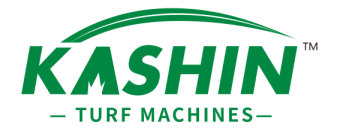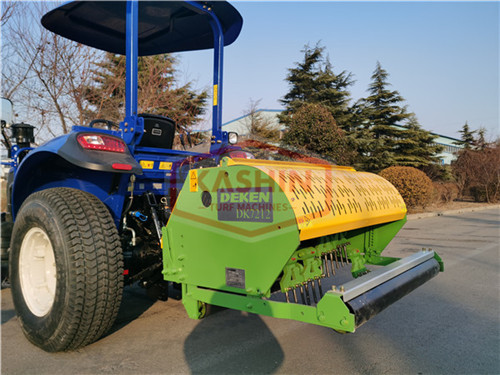When and How Do You Aerate Your Grass?
Author:Ricdro
The basic idea behind lawn aerator is that, like you, your lawn and the soil under it need to breathe. But how do you accomplish this? And when should you aerate your grass? These are issues I address in this article.
What Is Lawn Aeration?
Providing much-needed lawn aeration for your grass entails dealing with thatch—which, along with compacted soil (see below), lies at the heart of the matter.
How to Remove Coffee Stains From Carpet
Thatch is the loose, organic layer of dead and living material in the lawn: shoots, stems, and roots that develop between the zone of green vegetation and the soil surface. Thatch build up begins when turf produces organic debris faster than it can be broken down. Not all thatch is bad. A thin layer of thatch in lawns provides insulation against extreme temperatures and fluctuations in soil moisture. More than an inch of thatch, though, can cause problems. Too much thatch can hold excessive water, leading to reduced oxygen that reaches turf roots. It can also increase pest problems by harboring disease-causing organisms and insects.
The build-up of lawn thatch makes it difficult for your lawn to breathe. Lawn aeration performed in spring or fall helps control lawn thatch. The process of lawn aeration can be as simple as poking holes in the soil here and there (so-called “spiking”), but this would work only for superficial cases. For those in greater need of lawn aeration, this haphazard approach will not be sufficient: you will need to perform core aeration. You should also faithfully remove as much lawn thatch as you can in fall by raking deeply, rather than just skimming the autumn leaves off the top of the lawn.
Lawn aeration also breaks up compacted soil, allowing water, air, and nutrients to permeate into the root zone. Grassy areas submitted to constant foot traffic (or, worse, car traffic) require lawn aeration more frequently than do out-of-the-way areas.
When and How to turf aerator
Lawn aeration should happen when grass is at its peak growing period so it can recover quickly. Aeration may be undertaken in the late spring or early summer for warm-season grasses, such as Bermudagrass.
But for lawns planted with cool-season grasses (such as Kentucky bluegrass), early spring or fall is the best time for core aeration.
You can easily rent a lawn core aerator from a big box store or rental center. Since you should not need to aerate your lawn very frequently, it makes better financial sense to rent rather than purchase the aerator. Typically, if you don’t see any issues with your lawn, you can aerate every two to three years. However, for high traffic areas or if your lawn grows in heavy clay soil, annual aerating may be necessary.
This lawn aeration equipment will pull plugs, or “cores” (thus the name) of soil out of the ground, letting air in.1 These plugs should be two to three inches in depth. Such a plug should be pulled out of the lawn at about every three inches. The plug removal process is facilitated by watering the lawn the day before, but don’t water to the point of muddying the soil. Leave the plugs on the grass: they’ll break down and add nutrients to the soil. Water every two to three days after aerating.
Likewise, if your thatch problem is severe (say, 3/4 inch thick or more), rent a vertical mower from a rental center. Alternatively, hire a lawn service to do the job of lawn aeration for you. For more on dethatching, please consult this information on raking leaves.
The shock absorbing aeration mechanism is driven with a large diameter crank and sealed for life bearings giving many years of trouble-free service with the minimum of maintenance. The front ground drive wheel are fixed in gear and the rear wheels are free for turning and maneouvring the machine, raising and lowering in and out of work is tread bar assisted. The operator handles are mounted to the chassis using three point shock absorbing mountings for low operator handle vibration levels (HAV). Set-up and operator controls are simple making it suitable for private or contract / hire capable of working on fine sports turf or rougher surfaces such as estates and gardens with little surface disruption and consistent depth adjustable to 5″. The overall width of the machine is 80cm (32″) so it can access pedestrian gateways/ doorways etc.
MULTI-PURPOSE HEAVY DUTY AERATORS
Our efficient and versatile come standard with ’s proprietary revolution chisel point sports tines. The sports tines allow you to aerate up to 7.5″ deep.
Optional fine tines for golf greens allow aeration to a depth of 6.5″.
Coring spoons are also available for the . Tine styles are interchangeable on the standard axle.
Or buy an extra rotor and switch from a slicing aerator to a coring aerator in a mater of minutes.
making the best value for multi-purpose use.
Get more air, water and nutrients to your turf root system to promote healthy Eco-friendly growth.
MORE FREQUENT AERCORE; LOWER COST
These rugged turf aerators will handle a large percentage of the workload of a deep tine aerator for much less money and do the job in much less time. Whether you prefer coring aeration or slicing aeration, this will suit your needs.
Because have a lower cost and work faster than traditional deep tine aerators you can aerate every two to three weeks. Many facilities’ budgets allow aeration once a year with deep tine PTO driven aerators. Being able to aerate more frequently gives you a healthier turf and safer field year round.


